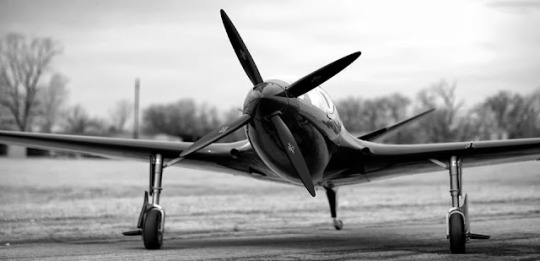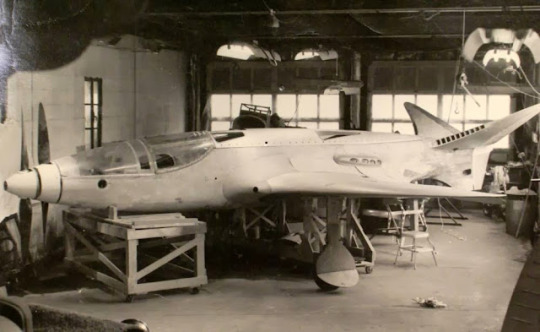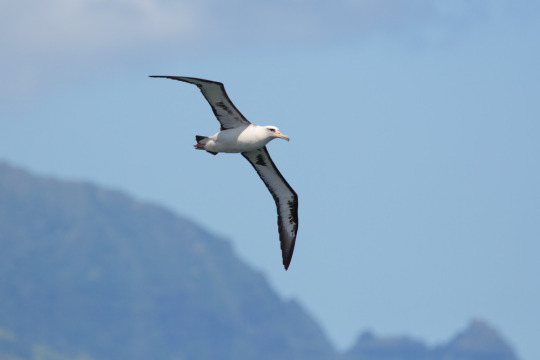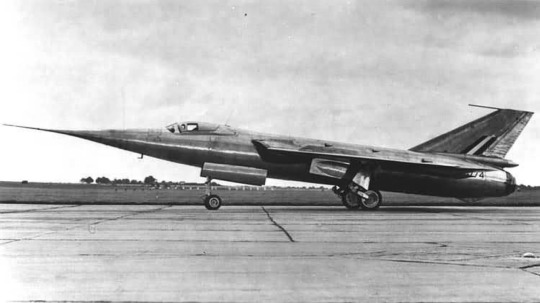#Airspeed records
Text
From Cambridge to the Edge of Space: The Adventure World of Hamish Harding
From the depths of the Mariana Trench to the harsh conditions of space, British adventurer Hamish Harding is no stranger to crossing borders.
The Cambridge-educated jet pilot and aircraft broker holds 16 airspeed records, including the Guinness World Record for fastest flight around the globe around the North and South Poles.
Last year, 58-year-old Brew became the first Briton to fly on…

View On WordPress
#Action Aviation#Aircraft broker#Airspeed records#Antarctica expedition#British adventurer#Deep-sea diving#Explorers Club#Guinness World Record#Hamish Harding#Jet pilot#Mariana Trench#Round-the-world flight#Space tourist#Youngest person to reach the South Pole
2 notes
·
View notes
Note
Psst do you perhaps know password to lieutenant phone? For no a reason ofc ofc
[Radio static, for just a moment. It sounds like an amused chuckle.]
the fair lieutenant's reticent / and i take after him
though i'll keep secrets to myself / i'll go out on a limb
he reinstates a password / to keep out prying eyes
but since i know you're curious / i offer compromise:
a rhythm used repeatedly / yes, i know it well
and since he's changed it recently / the old one, i can tell
the top speed of an aerostatic / in kilometers per hour
a cool three-five-two-nine-point-six / an impressive show of power
#skillsposting#radio station: call and response#radio station: volta original#until you can offer a legitimate reason / leaking his password is akin to treason#ooc *looks up on wikipedia flight airspeed records* 3529.6 km/h is the speed of a Lockheed SR-71 Blackbird
6 notes
·
View notes
Text
hello I am back and I'm having THOUGHTS about Artemis fowl
in book 3, it's mentioned in passing that Root set the airspeed record 80 years ago
it's mentioned several times that Holly is in her 80s
therefore, Root's already a Recon officer during Holly's childhood
i'm FAIRLY sure it's mentioned that Holly's mum died pretty early in her life from radiation poisoning
Holly's dad is never mentioned
therefore, there's a decent chance that Root's the only parental figure Holly has; or he's just. straight up her dad.
anyways. the Angst? the Trauma?? of book 4??!? FUCK opal koboi for this shit, and thanks Eoin for giving me Numbers to think about.
#artemis fowl#im so sorry#absent father julius root was Not a headcanon i thought id ever have#he Might have put his career ahead of his family though.#and holly's mum was probably enough of a girlboss to walk out on him for it#although cudgeon fucks up my hc of foaly being younger#cos he grew up with root and went to uni with foaly
39 notes
·
View notes
Text

Ability to intercept an SR-71: Victor Belenko states the Mig-25 cannot intercept the SR-71 for several reasons: The SR-71 fly too high and too fast; the Mig cannot reach it or catch it. The missiles lack the velocity to overtake the SR-71 and in the event of a head on missile fire (The Golden BB), the Guidance system cannot adjust to the high closure rate of the SR-71.
The Mig-25 has a jam proof radar but cannot distinguish targets below 1,640 feet due to ground clutter. The radar was so powerful it could burn through jamming signals by approaching bombers.
Upon dismantling the Mig-25, the data was analyzed by the Foreign Technology Division of the Air Force at Dayton, Ohio. There were many surprises:
1The Mig had been manufactured in February 1976 and thus was one of their latest most sophisticated production aircraft.
2Transistor circuitry was not used but instead the Soviets relied on vacuum tubes for most of their electronics. The Soviets reasoned the vacuum tubes were less affected by EMP waves in the case of nuclear attack; were more resistant to temperature extremes and they were easy to replace in remote airfields where transistors may not be readily available if repairs were needed.
3Welding was done by hand.
4Rivet heads were exposed in areas not critical to parasitic aerodynamic drag.
5Pilot forward vision was highly obstructed.
6With huge Tumansky R-15D-300 engines the Mig was considered almost a rocket.
7Pilots were forbidden to exceed Mach 2.5. There was a total of three engine instruments and the airspeed indicator was redlined at 2.8 Mach.
8Above Mach 2.8 the engines would overheat and burn up. The Americans had clocked a Mig-25 over Israel at Mach 3.2 in 1973. Upon landing in Egypt, the engines were totally destroyed. We did not understand that the engine destruction was inevitable.
9The combat radius is 186 miles.
10Without using afterburner; staying at optimum altitude and not maneuvering, the Mig can fly in a straight line for 744 miles.
11The plane was so heavy at 64,200 pounds, that according to early rumors Soviet designers had to eliminate a pilot ejection system. However this was disproved. Most MiG-25s used the KM-1 ejector seat. The last versions used an early variant of the famous K-36 seat. The speed record for the fastest successful ejection (Mach 2.67) is held by a KM-1 equipped MiG-25.
12Maximum operational altitude: Carrying two missiles, 78,740 feet (for maximum two minutes duration); carrying four missiles, 68,900 feet is maximum.
13Maximum altitude of missiles: 88,588 feet.
14Maximum G load: With full fuel tanks 2.2 G's is max; with near empty fuel tanks, 5 G's is dangerous. The Mig-25 cannot turn inside a U.S. F-4 Phantom fighter!
15The plane was made of steel alloy, not high temperature titanium, although strips of titanium was used in areas of high heat concentration.
16In a tight turn the missiles could be ripped from the wings. thesr71blackbird.com/Aircraft/Stori…
@Habubrats71 via X
21 notes
·
View notes
Text
youtube
JESSICA DUBROFF
1988-1996
Jessica Dubroff, 7, was an American trainee pilot who died attempting to be the youngest person to fly a light aircraft across America. On the tragic day, she was accompanied with her flight instructor, Joe Reid and her father Lloyd Dubroff.
Jessica was born in Falmouth, Massachusetts, US and moved to San Francisco. She grew up not owning toys, not permitted to watch TV and didn’t enrol in a school. She started taking flight lessons from Reid on her 6th birthday and was an enthusiast. She had over 33 hours flight training, and even though the media labelled Jessica a pilot, she wasn’t legally to be a pilot due to her age, the minimum age requeirement is 17. Whilst on flights, Reid had to be on the controls during flights in a dual yoke flight arrangement. She and Reid would be on the controls at the front and her father Lloyd at the back.
The trio arranged a "Sea to Shining Sea" flight which was promoted as a bogus ‘record attempt’ due to her young age. Reid considered the flight as simply flying with a child sitting next to him and her parents paying for it. The flight sparked a lot of media coverage and Jessica became an instant celebrity.
On 11 April 1996 they had knowledge of the forecast weather conditions in Cheyenne Regional Airport. As they were boarding their plane as it was raining but her father stated that they could ‘beat the storm’ which was approaching. Despite the conditions becoming worse, Reid decided to go ahead with the flight and took off at 8:24am despite reduced visibility. The plane lifted off, climbed slowly and was wobbly, the plane then fell rapidly crashing onto a road in a neighbourhood in front of somebodys home. The three were killed instantly.
The crash was caused by Reid’s decision to take off in poor weather conditions, overloaded aircraft and it wasn’t able to maintain airspeed. Reid was sitting on the right, however, the main control instruments were on the left in front of Jessica. Investigators believe they went through with the flight due to ambition and media commitments.
The incident featured on TV series Why Planes Crash.
#jessicadubroff #whyplanescrash
3 notes
·
View notes
Photo




The Revolutionary 500 MPH Bugatti Plane That Almost Changed WW2
This is the Bugatti Model 100P: A 900 HP, 500 MPH, race plane imagined by none other than legendary automotive designer Ettore Bugatti, so technologically advanced that it could have single-handedly dominated the skies of WWII for Germany, had the Nazis ever gotten their hands on it. But after more than seven decades of obscurity in a French barn, the "Veyron of the Skies" is ready to finally take flight for the first time.
In 1938, Ettore Bugatti enlisted the help of his chief engineer, Louis de Monge, to do something the pair had never attempted before: build an airplane. And not just any airplane, a screamingly fast racer capable of beating his counterparts in Deutchland's most prestigious air race: the Coupe Deutsch. And they almost did too.
The Model 100P that Bugatti devised was the SR-71 of its day—an aircraft packed with technology ludicrously advanced beyond the existing state of the art. Measuring a stout 25 feet long with a 27-foot wingspan, the 100P Its fueselage and forward-swept wings were formed from multi-layer wood laminate—sandwiching balsa and hardwoods—a manufacturing technique still widely used today but practically unheard of in the 1940's.
The 100P was exceptionally streamlined thanks to its revolutionary inline engine design—wherein the 100P's pair of 4.9L, 450HP, 8-cylinder racecar engines were positioned behind the cockpit—that drove a pair of counter-rotating props. It also included a 102 degree V-tail, a zero-drag cooling system that ejected air from the trailing edges of the wings, and computer-directed flight controls that automatically changed the wing profile to produce extra lift or reduce drag and acting as an airbrake when pulling out of dives. Even the automatic landing gear took orders from the plane's computer system.
The airspeed record in 1939 stood at 469 mph, set by a German Messerschmitt. Had the 100P flown in 1940 at the Coupe Deutsch, the math suggests it would have topped 500 mph. However, the 100P never did fly in 1940, having just missed the entry deadline in September 1939 due to manufacturing delays.
While this was a disappointment to Bugatti, this delay may well have changed the outcome of World War II. During development, the French government learned of the project and approached Bugatti with an offer to use the technology for a new generation of highly-maneuverable, light-weight fighter planes. He turned them down but as the second World War broke out. When Germany invaded France in 1940, there became a very real chance that the Germans could learn of and seize the 100P, using the technology as their own war machine to decimate the Allied air fleet, Spitfires and all.
But Bugatti, who became a French citizen after WWI and who rarely hide his distaste for the Germans, wasn't having any of that mess. Rather than let the plane fall into Nazi hands, he decided to hide the nearly-completed aircraft in a barn somewhere in the French countryside. And that's where it stayed throughout the war.
After its rediscovery at the end of the War, the 100P was sold and auctioned numerous times before finally coming to rest in the EAA Airventure Museum, where it has been restored and is currently on display. However, this septuagenarian aircraft is far too old and delicate to fly anymore, which is why a dedicated team of classic plane enthusiasts have spent the better half of a decade building an exact, full-scale replica capable of flight.
"The vision, the courage, the entrepreneurial spirit, those things. That's where the focus is," Scotty Wilson, a former Air Force pilot and historical plane enthusiast from Tulsa, Oklahoma involved in the replica project, dubbed Le Reve Bleu, told KFOR. "It's an airplane at the end of the day. But it happens to be a very cool airplane with an interesting story."
"The Bugatti 100P was 85 percent complete when the Germans invaded," ex-RAF engineer John Lawson, who built the replica's gearbox, told Metro UK. "If it had flown in 1940 then it would have been a revolution. It was an incredible aeroplane and Louis de Monge, who worked on it with Ettore Bugatti, was a brilliant engineer."
"The plane was designed to fly very fast but the gearbox wouldn't have much longevity,"Lawson continued. "I reverse-engineered it from plans and pictures and designed one which runs perfectly." The Le Reve Bleu team hopes to have the replica finished by this fall and will be making appearances in the skies above the Farnborough Air Show and Goodwood Revival for years to come.
By Andrew Tarantola.
#The Revolutionary 500 MPH Bugatti Plane That Almost Changed WW2#Bugatti Model 100P#aircraft#plane#superplane#prototype#Ettore Bugatti#Veyron of the Skies#Germany#the Luftwaffe#ww2#long reads
71 notes
·
View notes
Text
More translations because I'm in a translation frenzy and now my brain auto translates hfkhfmfbd
Herta space station this time! Not everything though, just stuff I put too much effort into to not share or things I like. I probably won't do everything in the space station in the future either unless I have Literally Nothing to do bc there's so much small text I don't want to read

QUEST FOR THE
EXTREME (it definitely needed the bolding. Definitely.)

LOVE IS CTERNAL (actually says cternal instead of eternal I cry this is one I wish didn't have a typo. With the wubbaboos ;-; )

CALLIPER (can I get some cola? thanks)

All the double arrows say caution as well
CAUTION
High Pressure Bleed Control Valve (in base zone)

Flight Recorder and Mach Airspeed Warning Module Assyembly (spelled like that)

COLLECTION (gee, I wonder where this is. Not Herta's collection that's for sure)

M.R.C (no idea what this is for but color me intrigued)


JP MANUFACTURING
HOME FIDER
On sale now!! (fider is the correct translation)
SPACE STATION (boy did I get the worst possible screenshot lmao)

Never slack off/ Never point fingers/ Never nap on duty. (no naps sad days)

I actually went around looking at the text of these specific signs (with arrows) to see if the text would change with the area. It did not :') sadge
the interior fittings
the cargo-hold
a nacelle

Welcome to Herta Space Station (base zone)

Welcome to The Center of Herta Space Station (They really want to drive home the "welcome to the space station")
Belobog translations/ game menus
#not art#hsr#honkai star rail#translation#herta space station#text#I translated the text for the screens you see all over the place with like images of the station but I don't feel like typing it up so :v#it says “love is eternal” in my heart and auto correct brain. that one hurts :'( poor babies may they find closure
18 notes
·
View notes
Text

Breaking The Sound Barrier by Mark Karvon link
"Originally designated the XS-1, the Bell Aircraft X-1 was a joint National Advisory Committee for Aeronautics–U.S. Army Air Forces–U.S. Air Force supersonic research project. It was the first of the X-Planes and there were 7 aircraft built altogether as part of the program.
The aircraft was powered by a rocket engine. It was hauled aloft slung in the bomb bay of a specially modified B-29 bomber. Once the desired altitude was reached, the X-1 was released and the rocket engine ignited. There were a number of glide tests which took place before the first powered flights.
On October 14, 1947, US Air Force X-1 aircraft #46-062 became the first manned airplane to exceed the speed of sound in level flight. Piloted by Captain Chuck Yeager, the aircraft was nicknamed 'Glamorous Glennis' after his wife and achieved the speed of Mach 1.06 (700 mph).
Other variants of the aircraft were built to explore aspects of supersonic flight. The X-1A exceeded Mach 2 when on 12 December 1953, Captain Yeager set a new airspeed record of Mach 2.44 (1620 mph) while reaching an altitude of 74,700 feet.
This print depicts the first supersonic flight made by Captain Chuck Yeager. Prints are available in various sizes and media through my website: www.markkarvon.com."
#Bell X-1#X-1#October#1947#NACA#NASA#United States Air Force#U.S. Air Force#US Air Force#USAF#Painting#Artwork#my post#X-Plane
36 notes
·
View notes
Text
youtube
NASA Uses Two Worlds to Test Future Mars Helicopter Designs
Engineers will go beyond the ends of the Earth to find more performance for future Mars helicopters.
For the first time in history, two planets have been home to testing future aircraft designs. On this world, a new rotor that could be used with next-generation Mars helicopters was recently tested at NASA’s Jet Propulsion Laboratory in Southern California, spinning at near-supersonic speeds (0.95 Mach). Meanwhile, the agency’s Ingenuity Mars Helicopter has achieved new altitude and airspeed records on the Red Planet in the name of experimental flight testing.
“Our next-generation Mars helicopter testing has literally had the best of both worlds,” said Teddy Tzanetos, Ingenuity’s project manager and manager for the Mars Sample Recovery Helicopters. “Here on Earth, you have all the instrumentation and hands-on immediacy you could hope for while testing new aircraft components. On Mars, you have the real off-world conditions you could never truly re-create here on Earth.” That includes a whisper-thin atmosphere and significantly less gravity than on Earth.
The next-generation carbon fiber rotor blades being tested on Earth are almost 4 inches (more than 10 centimeters) longer than Ingenuity’s, with greater strength and a different design. NASA thinks these blades could enable bigger, more capable Mars helicopters. The challenge is, as the blade tips approach supersonic speeds, vibration-causing turbulence can quickly get out of hand.
To find a space big enough to create a Martian atmosphere on Earth, engineers looked to JPL’s 25-foot wide, 85-foot-tall (8-meter-by-26-meter) space simulator – a place where Surveyor, Voyager, and Cassini got their first taste of space-like environments. For three weeks in September, a team monitored sensors, meters, and cameras as the blades endured run after run at ever-higher speeds and greater pitch angles.
“We spun our blades up to 3,500 rpm, which is 750 revolutions per minute faster than the Ingenuity blades have gone,” said Tyler Del Sesto, Sample Recovery Helicopter deputy test conductor at JPL. “These more efficient blades are now more than a hypothetical exercise. They are ready to fly.”
At around the same time, and about 100 million miles (161 million kilometers) away, Ingenuity was being commanded to try things the Mars Helicopter team never imagined they would get to do.
Fourth Rock Flight Testing
Ingenuity was originally slated to fly no more than five times. With its first flight entering the mission logbook more than two-and-a-half years ago, the helicopter has exceeded its planned 30-day mission by 32 times and has flown 66 times. Every time Ingenuity goes airborne, it covers new ground, offering a perspective no previous planetary mission could achieve. But lately, Team Ingenuity has been taking their solar-powered rotorcraft out for a spin like never before.
“Over the past nine months, we have doubled our max airspeed and altitude, increased our rate of vertical and horizontal acceleration, and even learned to land slower,” said Travis Brown, Ingenuity’s chief engineer at JPL. “The envelope expansion provides invaluable data that can be used by mission designers for future Mars helicopters.”
Limited by available energy and motor-temperature considerations, Ingenuity flights usually last around two to three minutes. Although the helicopter can cover more ground in a single flight by flying faster, flying too fast can confuse the onboard navigation system. The system uses a camera that recognizes rocks and other surface features as they move through its field of view. If those features whiz by too fast, the system can lose its way.
So, to achieve a higher maximum ground speed, the team sends commands for Ingenuity to fly at higher altitudes (instructions are sent to the helicopter before each flight), which keeps features in view longer. Flight 61 established a new altitude record of 78.7 feet (24 meters) as it checked out Martian wind patterns. With Flight 62 Ingenuity set a speed record of 22.3 mph (10 meters per second) – and scouted a location for the Perseverance rover’s science team.
The team has also been experimenting with Ingenuity’s landing speed. The helicopter was designed to contact the surface at a relatively brisk 2.2 mph (1 mps) so its onboard sensors could easily confirm touchdown and shut down the rotors before it could bounce back into the air. A helicopter that lands more slowly could be designed with lighter landing gear. So, on Flights 57, 58, and 59 they gave it a whirl, demonstrating Ingenuity could land at speeds 25% slower than the helicopter was originally designed to land at.
All this Martian Chuck Yeager-ing is not over. In December, after solar conjunction, Ingenuity is expected to perform two high-speed flights during which it will execute a special set of pitch-and-roll angles designed to measure its performance.
“The data will be extremely useful in fine-tuning our aero-mechanical models of how rotorcraft behave on Mars,” said Brown. “On Earth, such testing is usually performed in the first few flights. But that’s not where we’re flying. You have to be a little more careful when you’re operating that far away from the nearest repair shop, because you don’t get any do-overs.”
More About Ingenuity
Ingenuity began its life at Mars as a technology demonstration. It first flew on April 19, 2021, hovering 10 feet (3 meters) for 30 seconds. Four more flights in as many weeks added 499 seconds and saw the helicopter flying horizontally over the surface for 1,171 feet (357 meters). After proving flight was possible on Mars, Ingenuity entered an operations demonstration phase in May 2021 to show how aerial scouting could benefit future exploration of Mars and other worlds.
The Ingenuity Mars Helicopter was built by JPL, which also manages the project for NASA Headquarters. It is supported by NASA’s Science Mission Directorate. NASA’s Ames Research Center in California’s Silicon Valley and NASA’s Langley Research Center in Hampton, Virginia, provided significant flight performance analysis and technical assistance during Ingenuity’s development. AeroVironment Inc., Qualcomm, and SolAero also provided design assistance and major vehicle components. Lockheed Space designed and manufactured the Mars Helicopter Delivery System.
At NASA Headquarters, Dave Lavery is the program executive for the Ingenuity Mars Helicopter.
2 notes
·
View notes
Text


First Flight
A lever controlled the gas flow and airspeed recorder. The controls were simple and few, but Orville knew it would take all his finesse to handle the new and heavier aircraft. Orville takes off with Wilbur running beside, December 17, 1903.
5 notes
·
View notes
Text
I was idly wondering about what the fastest object humanity has ever built was, and what percentage of the speed of light it was traveling at. Apparently the answer is this space probe, which is expected to reach 0.064% of the speed of light, or about 119 miles per second.
The SR-71 Blackbird, holder of the flight airspeed record, reached 2,193.2 mph, or about 0.6 miles per second. That's honestly slower than I thought the fastest planes could go, when reasoning about it in miles-per-second terms.
2 notes
·
View notes
Note
Hnn dont know what to ask other then I see you also like birds and you seem cool so viciously shakes hand what is your favourite bird?
YES. I LOVE BIRDS SO VERY MUCH.
my favorite bird is the laysan albatross! i’m partial to all Procellariiformes but i will talk about any bird given the opportunity i’ll be honest
but since you asked:

firstly, their scientific name: Phoebastria immutabilis means “bright star, unchangeable” in ancient Greek which is just beautiful, i’m clawing at the walls of my cage. and just look at the eyeliner, fantastic. amazing
secondly! they are tubed nosed seabirds. those tubes in their noses have multiple uses such as measuring the airspeed around them to help with flight and secreting salt from a nasal gland up in there kind of like the opposite of snorting the good coke

third, i mean look at their wings! they have an adapted body structure that creates a stupidly high gliding ratio on those wings! their muscles lock in their wings to keep them extended for maximum soaring up for days at a time. there’s also a running hypothesis that the darker dorsal wing colors actually warms the air around them, creating a space of lower air pressure which reduces drag and generates lift, helping them fly longer.
fourth, they are monogamous and will mate for life. they have extremely elaborate courtship rituals with over 25 different movements. the sequence and movements are unique to the pair and partners will practice for years to get them just right.
fifth, they are known for forming same sex relationships naturally and keeping them! in hawaii, there is an uneven ratio of males to females which resulted in 31% of pairs on one island being females! and since albatross mate for life, the girls are in it together for the long haul. conservationists have actually been using them as foster parents for chicks that needed to be moved from air fields and other dangerous places. LOVE WINS!!

this is a picture i took of a chick in 2020, a bit blurry but fluffy as hell i care them

and finally, this photo is of wisdom, the oldest wild bird recorded (they first banded her as a breeding adult in 1956). this year she turns 71! she raised a chick last year at age 70 and is estimated to have raised over 30 chicks in her lifetime (which for a bird that lays one egg annually and often skips years, is pretty dang cool). she is estimated to have flown well over 3,000,000 miles in her lifetime which is 120 times the circumference of the earth. go grandma!
#birdsquawks-caw-caw#i’m not sorry i love these guys so much#kept borrowing the book about them in the library to the point where the librarian put limits on how many times i can borrow it in a row#birds
16 notes
·
View notes
Text
somewhere between 94 and 95 kph on the speedo (91ish irl), the air going around the spokes of my car's wheels makes a pleasant drone at F3. it can interact amusingly with whatever music is on; and sometimes i have a nice little jam sesh to it.
it has a very friendly timbre - it sounds quite pleasant! but like if you wanted to record it for a piece of music. how the HECK would you do that? cos even without the sound of other cars, you've still got the engine sound and the noises between the tyre and the ground to deal with. not to mention highway-speed winds - I'd assume that the kinda Ambient Airspeed right next to the wheel isn't quite 90kph cos Fluid Dynamics Bullshit but I'd assume that it's still important and having some effect on the shape of the soundwaves??
this isn't a question i need answered or that you should spend a bunch of time figuring out - it isn't BOTHERING me per se. it's just a thought that bounces around my head every so often and i wanted to share.
#i feel the need to apologise for dumping my Recurring Thought Experiments onto the internet#but also feel the need to share#... maybe this is a sign that im starved for social interaction#i should get on top of that. but Anyways#jonno rambles
10 notes
·
View notes
Text

10 Mar 1956 – Lt Cdr Peter Twiss sets a new airspeed record in the Fairey Delta FD.2, also becoming the first person to exceed 1,000 mph. His top speed is 1,132 mph (1,821 km/h).
@CcibChris via X

10 notes
·
View notes
Text
"I was there Gandalf..."
Week 2 - Blog Post #1 (Video and Article)
The article I found interesting because though I grew up with technology, my generation (or at least 90s babies) remember a time when not everyone had cell phones and internet access in their homes. I remember the “Before the Internet” times! But we grew up as technology exploded into what we have today. Granted, I used floppy disks when I was a kid, I remember being yelled at by my siblings when I didn’t rewind the tape, I remember when Netflix first started sending us movies in the mail, I remember how myspace was in and Facebook was for old people. I grew up when these trends ebbed and flowed so fast that it seemed hard to keep up. There was a time when I finally had technology in high school and finally was connected to my friends through apps and texting. Always being available was super fun and cool but it did start to turn into an addiction, I needed to be connected. I needed to watch my friends update their lives and be involved (even though all I was doing was commenting on posts). It became an unfortunate habit that affected my mentality greatly because I was not able to be there in person, just watching from the outside and being sad that it wasn’t me. In 2016, at 22 years old, I finally broke my addiction and deleted Facebook, deleted Twitter, and decided to disconnect from that. Now, I still use my phone for apps and things; I still have Snapchat, I peruse way too much on Reddit, and plenty of instant gratification games. But my intake of social media is down significantly over the past six years. I enjoy having the ease and convenience of the advanced technology I always have in my pocket.
Max Stossel’s talk about technology had me engaged from the very beginning. He made excellent points about how literally all our activity, data, trends, habits, and more are recorded and then turned around and used against us. There is a whole market dedicated to making us crave our phones and the apps that populate them. As I said before, I grew up with the explosion of technology but remember a time when it was not as prevalent as it is now. Kids after me have always had this connectivity and they are the target of these tech companies. As Max said, “We are pigging out on these digital marshmallows… we are switching attention to these screens 27 times per hour.” It is so readily available and so easy to “eat the marshmallow” and then receive 26 more instantly right after. Having this technology is such a blessing, to be able to have the information of the entire world and history available instantly. Seriously, I just googled “History of Japan” on google and got “About 1,920,000,000 results (0.67 seconds)”. But Max gave some good advice on how to remove that stress from your life though, to remove your phone from the room when doing homework, turn off any notifications that are not from a human being, or even just try not to use social media for a week. Phones should not be an extension of ourselves but a resource we use when it is necessary, not just because.
What was it like to not have internet for an extended amount of time? Going camping on South Manitou Island, as a group, we decided that no phones were the way to go and just have a good time together. This was this weird mixed feeling of it’s nice to just sit back and enjoy things but on the other hand, I could feel that itch in the back of my head that said “Got any texts? I wonder what that plant is? What is the airspeed velocity of an unladen swallow?” and this incessant need to acquire information instantly. I could have brought a Northern Michigan plant book to identify the plants but who has the time to do that?? As I get older it is less of a big deal to not have internet, but I still feel the itch to scroll or watch silly videos or whatever.
3 notes
·
View notes
Text
JESSICA DUBROFF
JESSICA DUBROFF
1988-1996
Jessica Dubroff, 7, was an American trainee pilot who died attempting to be the youngest person to fly a light aircraft across America. On the tragic day, she was accompanied with her flight instructor, Joe Reid and her father Lloyd Dubroff.
Jessica was born in Falmouth, Massachusetts, US and moved to San Francisco. She grew up not owning toys, not permitted to watch TV and didn’t enrol in a school. She started taking flight lessons from Reid on her 6th birthday and was an enthusiast. She had over 33 hours flight training, and even though the media labelled Jessica a pilot, she wasn’t legally to be a pilot due to her age, the minimum age requeirement is 17. Whilst on flights, Reid had to be on the controls during flights in a dual yoke flight arrangement. She and Reid would be on the controls at the front and her father Lloyd at the back.
The trio arranged a "Sea to Shining Sea" flight which was promoted as a bogus ‘record attempt’ due to her young age. Reid considered the flight as simply flying with a child sitting next to him and her parents paying for it. The flight sparked a lot of media coverage and Jessica became an instant celebrity.
On 11 April 1996 they had knowledge of the forecast weather conditions in Cheyenne Regional Airport. As they were boarding their plane as it was raining but her father stated that they could ‘beat the storm’ which was approaching. Despite the conditions becoming worse, Reid decided to go ahead with the flight and took off at 8:24am despite reduced visibility. The plane lifted off, climbed slowly and was wobbly, the plane then fell rapidly crashing onto a road in a neighbourhood in front of somebodys home. The three were killed instantly.
The crash was caused by Reid’s decision to take off in poor weather conditions, overloaded aircraft and it wasn’t able to maintain airspeed. Reid was sitting on the right, however, the main control instruments were on the left in front of Jessica. Investigators believe they went through with the flight due to ambition and media commitments.
The incident featured on TV series Why Planes Crash.

#jessicadubroff #whyplanescrash
0 notes